100 Cents Anna Rubin Kaje June 4 - July 2, 2023
Trigger Warning: This article contains content related to suicide.
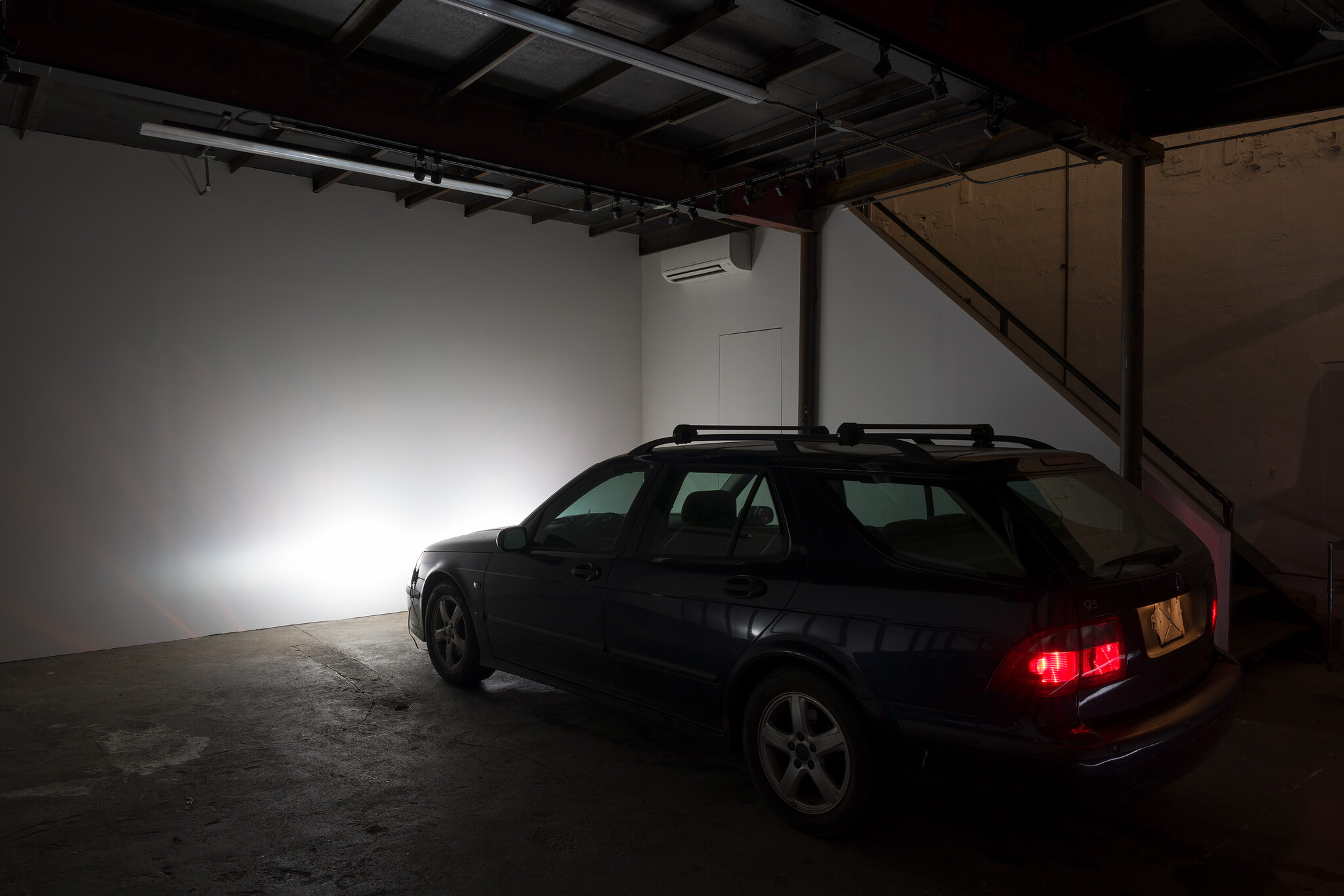
Installation view of “100 Cents”. All images courtesy of Kaje.
“100 Cents,” the title of Anna Rubin’s current exhibition at Kaje, are the only words the artist offers to accompany the work on view. As a result, the two word term carries the weight of providing an interpretive framework for the show. The weight feels appropriate—like an actual dollar in change, “100 Cents” hits heavier than the word for its equivalent sum. The finality of a single “dollar” is arguably worth next to nothing, but its equivalent in the open whole of 100 cents is abundant by comparison.
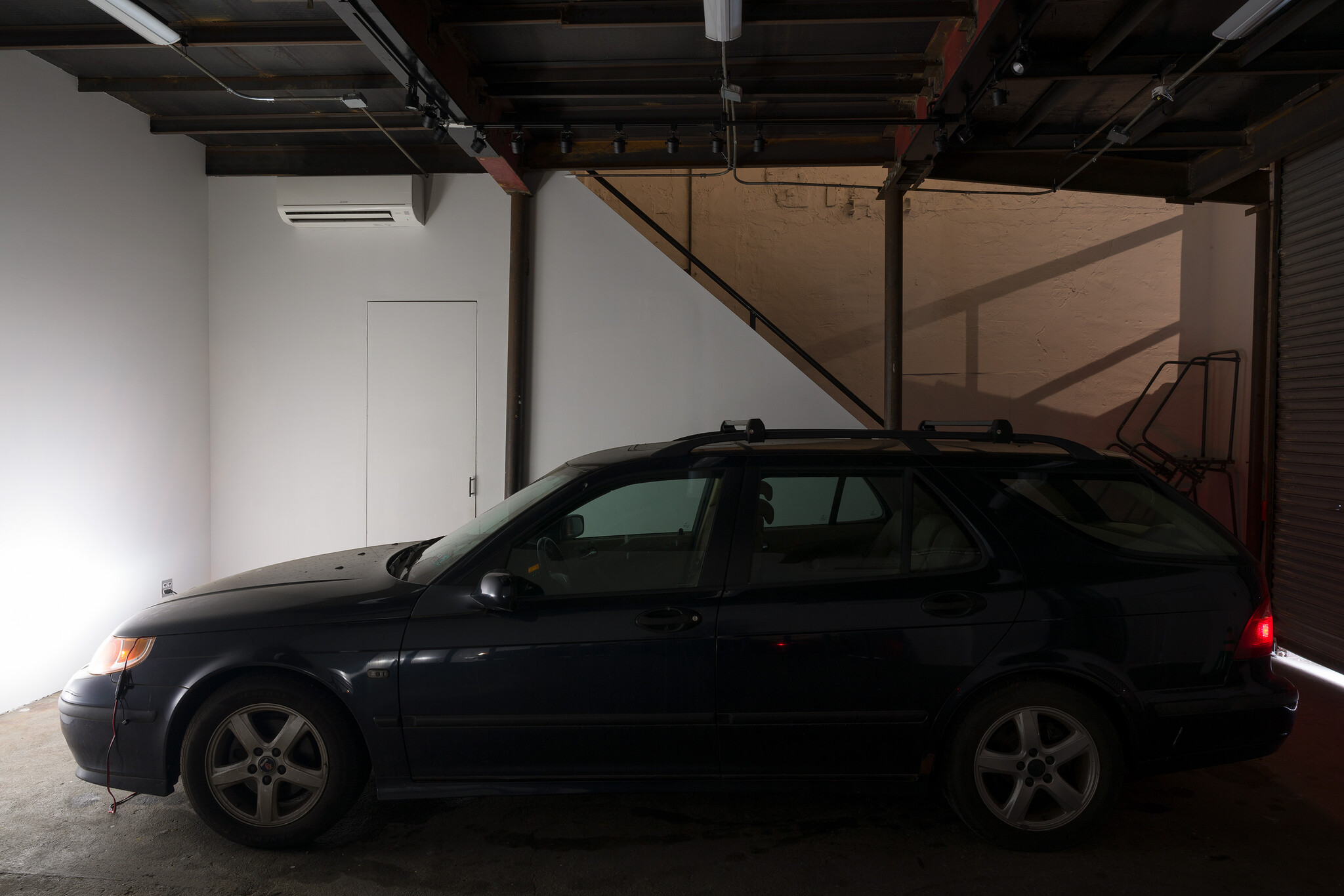
Installation view of “100 Cents”.
Entering this show feels a bit like stumbling through the wrong door and finding yourself somewhere you’re not supposed to be. The overhead lights are off. The room is mostly dark. The space is disorientingly lit by a pair of low beam headlights bouncing off the wall near the corner opposite the entrance. The domineering silhouette of a 2005 black Saab Station Wagon occupies about half the gallery with an almost extraterrestrial presence. The semi-reflective void of it’s dusty shell is punctuated by two illuminated rear brake lights.
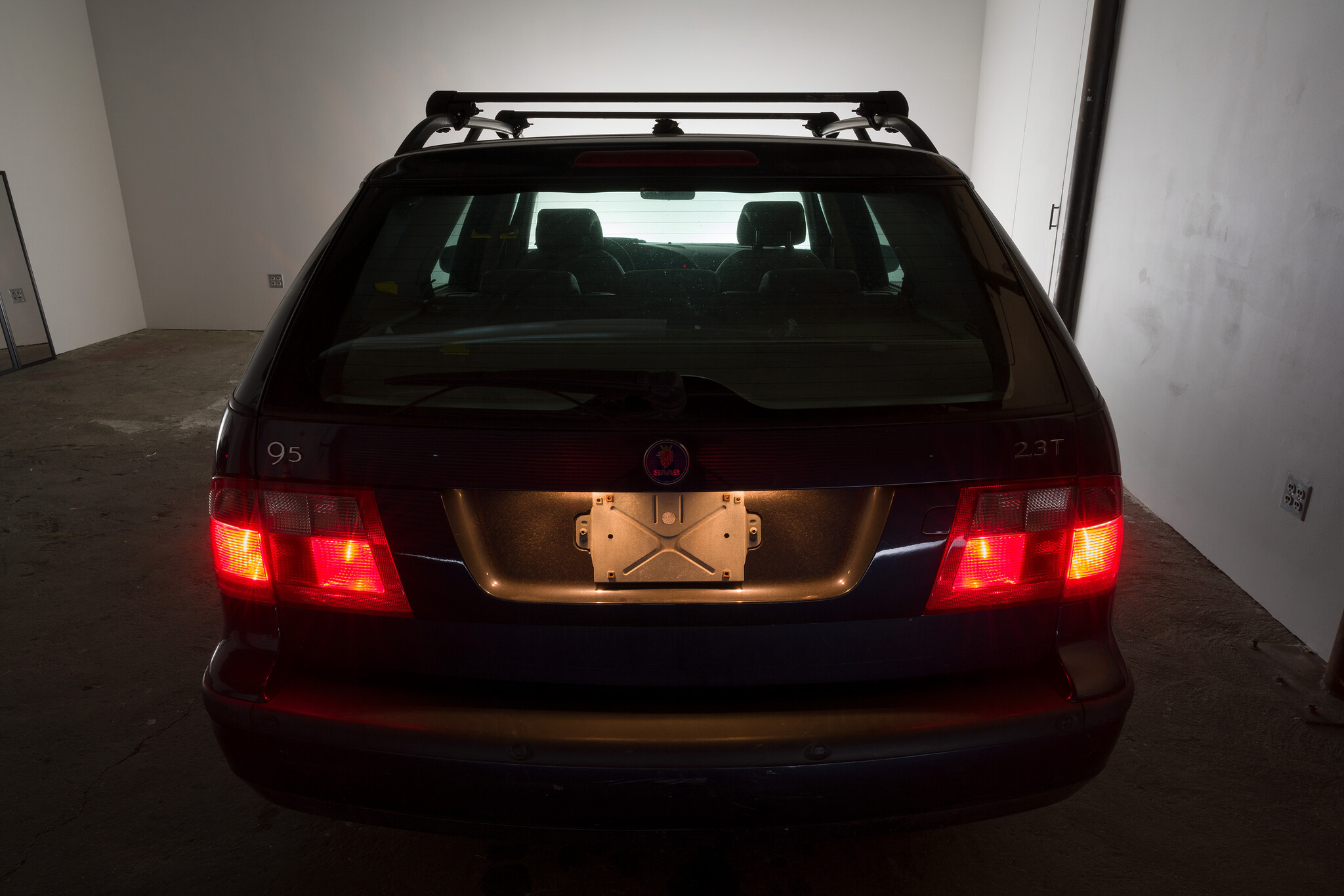
Installation view of “100 Cents”.
That all the light in the show is radiating from what appears to be a parked car idling in what would otherwise be a pitch-black garage casts a comically bleak shadow, adding an additional layer of darkness, albeit psychological, to the already poorly lit environment. The Saab, the show’s centerpiece, is staged to suggest that we are in the midst of an act of vehicular suicide in which the exhaust from an engine is allowed to collect in an enclosed space and create the conditions for Carbon Monoxide poisoning. Like many galleries, Kaje is housed within a building that was once used to service automobiles, and the presence of a large garage door awash in red brake light completes the mise-en-scène.
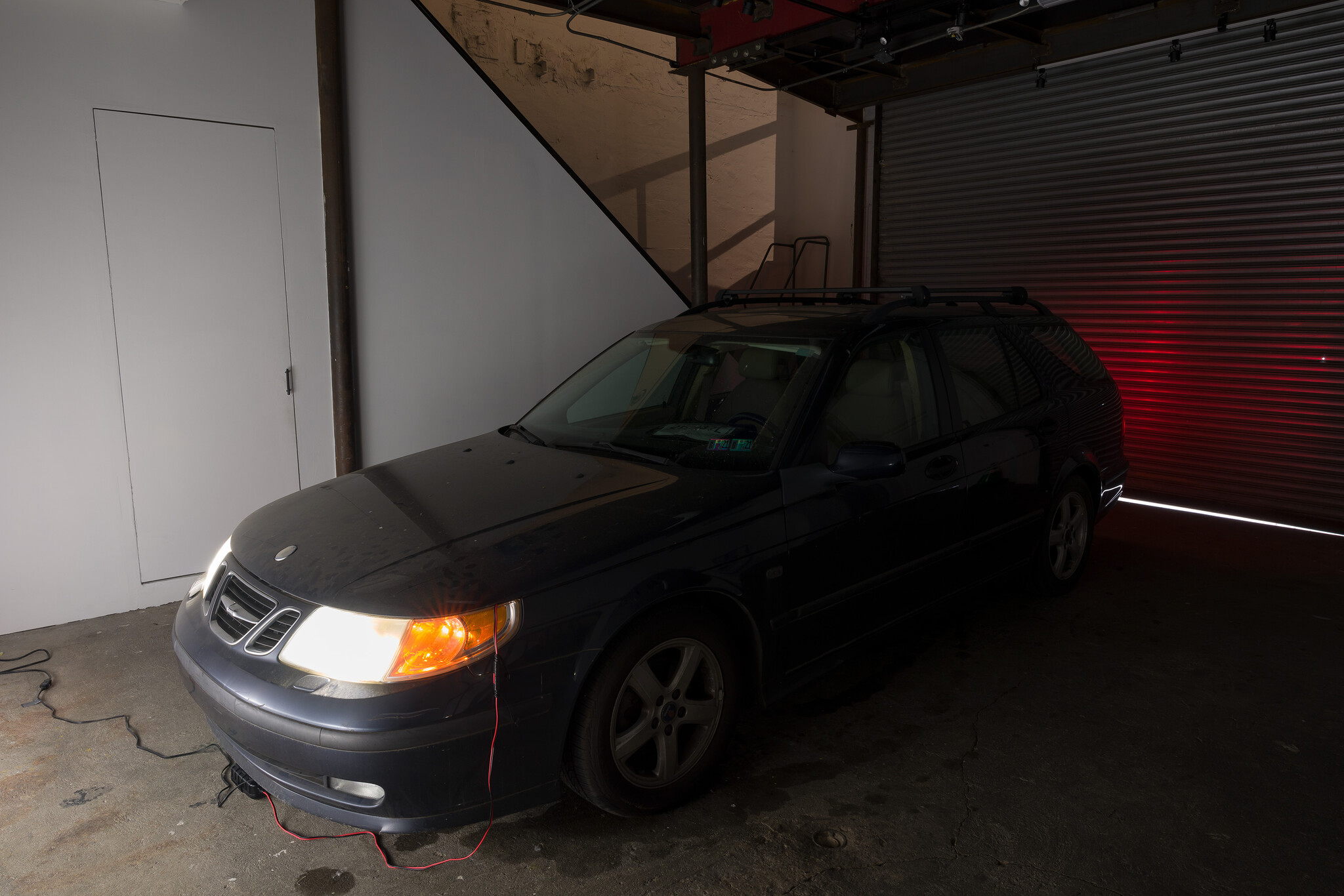
Installation view of “100 Cents”.
But the Saab’s engine is not actually running. The vehicle’s battery has been connected to an electrical outlet in the gallery. Powered by an external source, the car is sitting indefinitely in Accessory Mode, a liminal state of operation in which it is neither fully on nor off. The absence of any real danger amplifies the pathos of Rubin’s stripped-down installation. What’s being articulated here is something potentially much more devastating than suicide: a never-ending suicide attempt. One that only ever results in the continued survival of itself, a kind of lifeless immortality.
The absence of a suicidal individual from the driver’s seat further reinforces this interpretation. The presence of a driver is suggested by a cell phone that’s been casually strewn on the front passenger seat. Connected to the car’s stereo through an auxiliary cord, the phone is the source of the show’s score; a recording of piano scales executed at irregular tempos. The notes feel exploratory as if the performer is cautiously testing the waters of nonexistence. The rubato emphasizes the moments of silence that break up the notes, giving form, and even a space for contemplation, to the logarithmic abstraction known as “100 cents.”
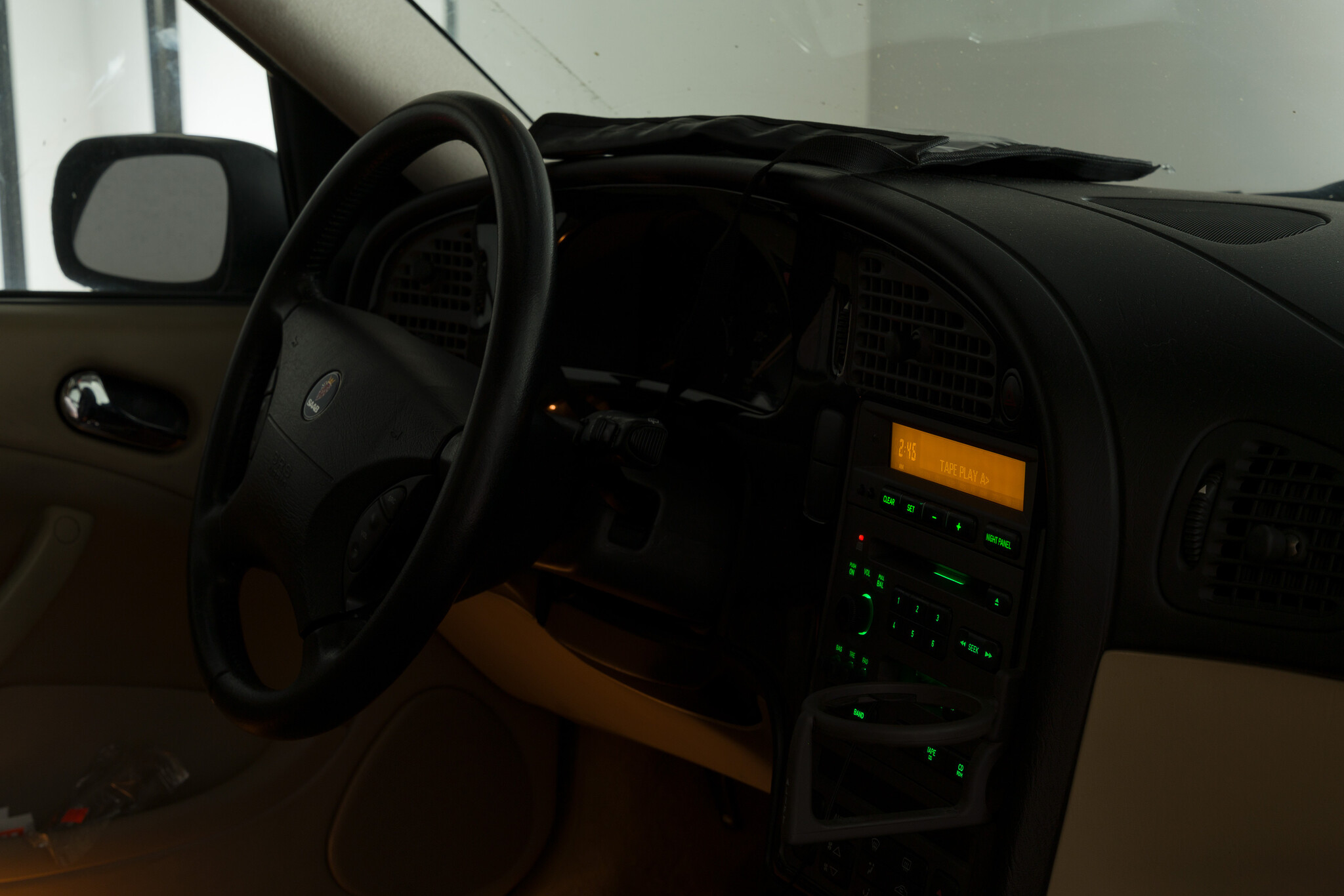
Installation view of “100 Cents”.
In the standard method of representing and comparing musical pitches, “100 cents” is equal to a “half-step,” which is the term for the change in frequency between two successive notes. While one cent is almost too minuscule to perceive, a collection of cents, even just a few, is the way to communicate a small difference in pitch if a single note is out of tune. Like the show’s title, which in its stark plainness references this system of valorization and exchange, the work on view is a collection of parts building toward its own reverberation of a subtle sublime.
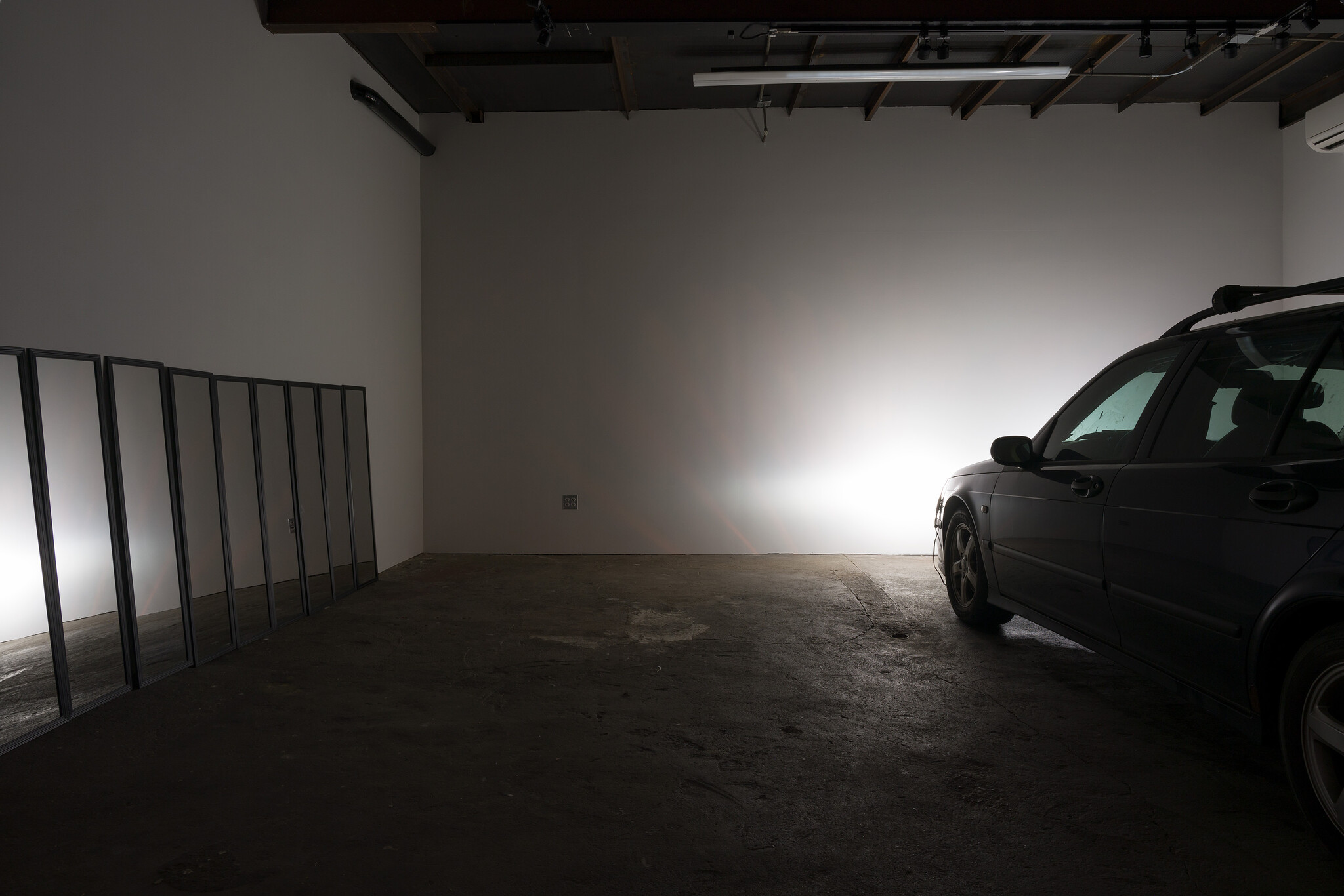
Installation view of “100 Cents”.
Across the room to the left of the Saab is the other half of the show. With it comes the revelation of the missing driver. Using a procession of identical full-body mirrors lining the wall, Rubin has cast her audience in the role. Whether or not you accept the part, the implications here are inferentially fruitful. As is her framing. The amalgamation of mirrors, each of which is designed to reflect one person at a time, creates a fragmented reality in which you are the star and, given the scene, prompts a consideration of the long-term consequences for a society in which everyone is living with undiagnosed main character syndrome.
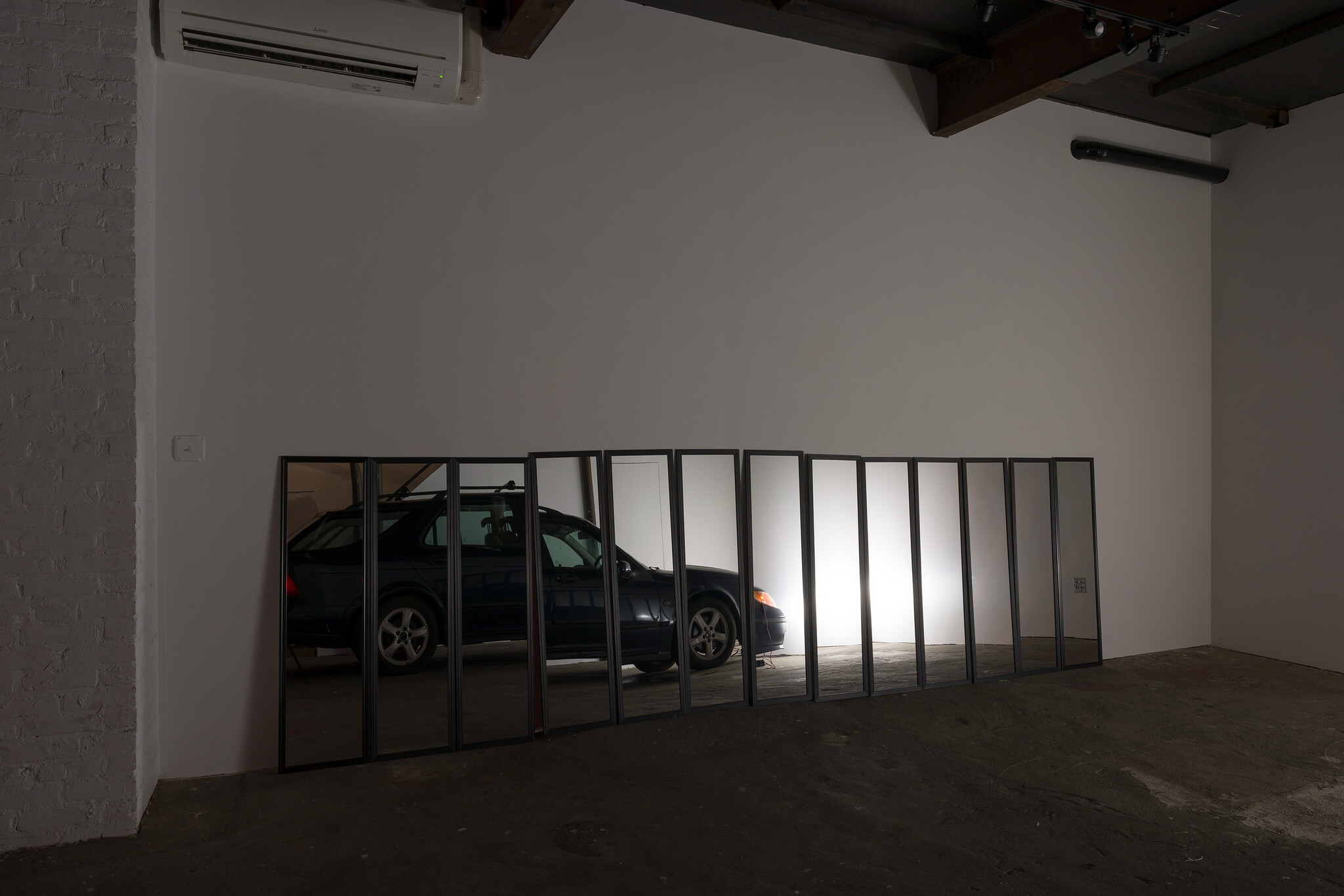
Installation view of “100 Cents”.
It’s also here that Rubin is most directly engaging with an art historical precedent. The mirrors, which run the length of the station wagon, bring to mind the Arte Povera sculptural interventions of the late 60s and the thoughtful attention to spatial relations that came to define that movement. Their varying heights mirror the rubato of the exhibition’s score while the understated curve of their collective body brings to mind the narrative arc of a life. There is an obvious association with piano keys. A closer inspection reveals the floor beneath them is extremely uneven. Like the sound produced by the keys of an out-of-tune piano, the warped trajectory of the mirrors reflects the imperfections of their supportive structure.
Rubin’s exhibition is the second in a three-part program organized for Kaje by artist Jason Hirata. As the middle part of the program, Rubin’s title, “100 Cents,” takes on additional significance. The show is its own half-step between two successive notes and its title an acknowledgment of this parenthetical framework. Rubin’s melodramatic rendering of a transitory in-between reminds us that states of existence are possible beyond life but before death, and that while hopefully most of us are lucky enough to be spared a purgatory of this nature, in the end, no one can avoid the Saab, we will all have to face the music eventually.